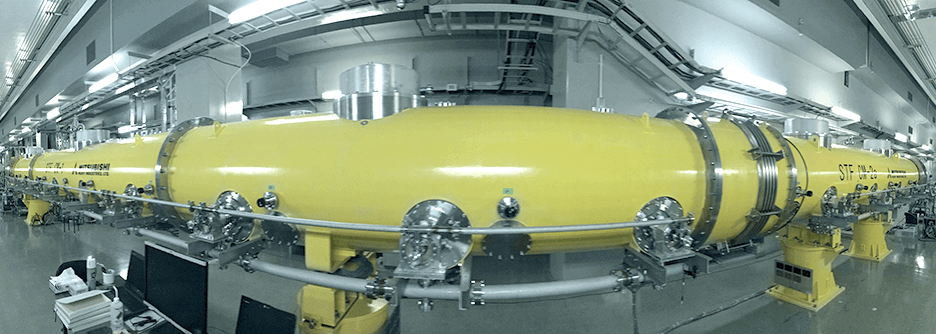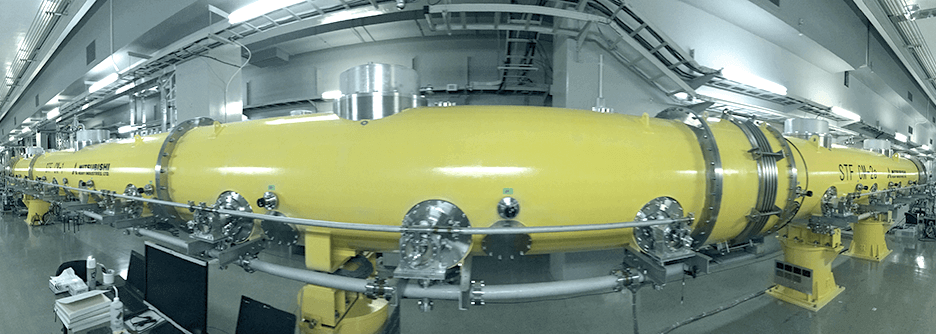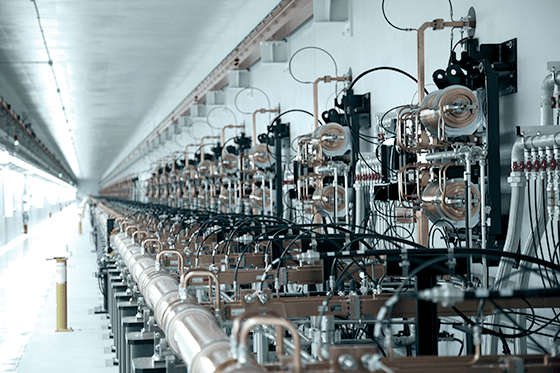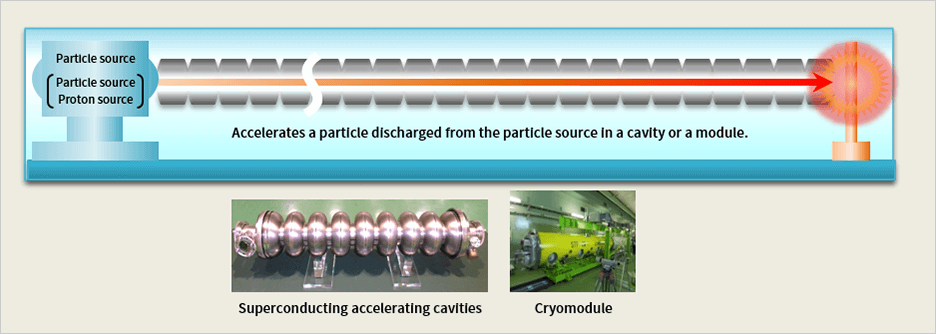Particle Accelerator


Distributors :
Innovative equipment that contributes to the development of modern science and technology by elucidating scientific phenomena that researchers strive to understand.
An accelerator can propel electrically charged particles such as electrons and protons to nearly the speed of light by exposing them to high-frequency electric fields. Accelerators are employed for a wide range of uses in physical studies and industries. Physical laws can be verified, for example, by colliding particles in a high-energy state at extremely high speeds. A synchrotron, a type of accelerator useful for medical research, produces radiation with a very short wavelength by bending the trajectory of electrons accelerated to a high speed.

What is an accelerator? - Operating principle

Particle Accelerator of MHI - History
Our original accelerator was normal conducting S-band accelerating structures delivered to Tokyo University in 1959. We manufactured the accelerator components at the production facilities of Nagoya Aircraft Manufacturing Company. In the years since we have participated in most of Japan's large-accelerator projects as a specialist in precision machining technology for non-ferrous metals such as copper and aluminum, a specialty we acquired through the manufacture of aircraft parts. We have also improved our accelerator technology by developing components that satisfy the specifications and performance standards required by researchers and research institutes. We currently design and manufacture peripheral equipment including waveguides, high-frequency windows, vacuum beam chambers, and periodic magnetic field generators, as well as the main accelerator components such as the accelerating structures and cavities. The accelerating structure and cavity accelerate particles such as electrons and protons to velocities close to the speed of light. The waveguide and high-frequency window introduce high-output microwaves to the accelerating structure and cavity. The vacuum beam chamber serves as a passage for the accelerated particles. The periodic magnetic field generator continually bends the trajectory of a particle a little at a time to generate strong synchrotron radiation.
The KEKB accelerator (electron-positron collider) at the High Energy Accelerator Research Organization (KEK) was used to demonstrate the “Kobayashi-Maskawa theory, the theory that predicted the phenomenon of CP symmetry breaking,” earning its creators the Nobel Prize in Physics in 2008. Our company was in charge of designing and manufacturing the “accelerator for injector,” “vacuum beam chamber,” “normal conduction ARES cavity,” and “superconductive crab cavity” in the KEKB accelerator project. In more recent years, the European Organization for Nuclear Research (CERN) discovered a new particle, the Higgs boson, by colliding a super-high energy electron and positron together in the Large Hadron Collider. We are now preparing to manufacture a “superconducting accelerating cavity” in a research and development program for the International Linear Collider (ILC). The researchers in this program are closely studying the characteristics of the new particle.
We have been developing the top-level accelerator components in the world to support the passion and achievements of researchers who are pursuing research and exploring day and night in various institutes at home and abroad in the interest of human beings and society.
Technology
Proceedings
- Annual Meeting of Particle Accelerator Society of Japan (PASJ)
- International Particle Accelerator Conference (IPAC)
- International Free Electron Laser Conference (FEL)
- ICFA Advanced Beam Dynamics Workshop (ABDW)
- Linear Accelerator Conference (LINAC)
- International Conference on RF Superconductivity (SRF)
- International Conference on Heavy Ion Accelerator Technology (HIAT)
Related information
Sales and Service Department
Mitsubishi Heavy Industries Machinery Systems, Ltd.
Slide horizontally to see the table.
| Name | Address | Department name |
|---|---|---|
| Kobe Head Office | 1-1, Wadasaki-cho 1-chome, Hyogo-ku, Kobe 652-8585, Japan | Team 1, Infrastructure Facilities Sales Section 1, Infrastructure Facilities Sales Department, Infrastructure Facilities Business Division
Phone: +81-78-672-2781 |




